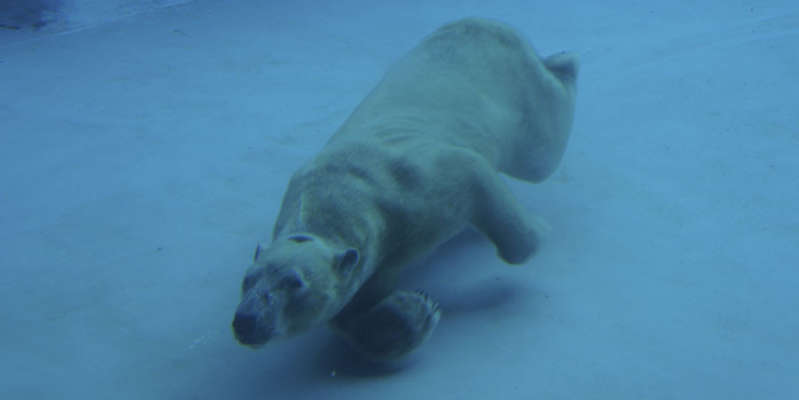An unusual way of hunting polar bears discovered
Scientists at the University of Alberta in Canada have confirmed an unusual way of hunting polar bears in the Arctic – they kill walruses from a height with stones and pieces of ice, Gazeta.Ru reports, citing Arctic magazine.
This behavior has been reported many times by the Inuit people of North America, but scientists have never seen it. Back in 1865, Arctic explorer Charles Francis Hall, in his book Arctic exploration and life among the Eskimos, retells the story of the Inuit, how a polar bear on Baffin Land in Canada attacked a walrus and threw a boulder on his head, accurately calculating the distance and trajectory and hitting right into purpose.
Until now, such stories were considered myths. Analysis of all reports and observation of predators have shown that polar bears are quite adept at using available tools in order to get to their prey. This is especially true when hunting walruses, which can be fought off with tusks. They are the most dangerous, but also desirable food. Therefore, bears do not risk attacking them at close range.
“I have always been impressed with the accuracy and reliability of the observations of experienced Inuit hunters, so I thought these stories might not be just myths. Although the phenomenon itself is most likely quite rare, ”- said the author of the study, biologist Ian Stirling.
To prove this theory, scientists have collected similar cases over 200 years. Stories described how polar bears take a cobblestone or block of ice in their paws and throw their prey in the head. In this case, predators could climb higher or stand on their hind legs. In addition, the bear could finish off the walrus with a stone on the head, breaking the skull, if he did not die from the first blow.
According to the stories of hunters, bears destroyed their traps in the same way.
Indirect evidence was the behavior of the Gogo bear at the zoo in Japan. The staff hung the meat at a height of three meters – higher than Gogo could reach. At first, he jumped unsuccessfully, but then he began to use a plastic pipe to knock off a piece. But he did not stop there either, but improved the technology – with the help of a branch, he learned to remove meat from the hook in a matter of minutes.
Climate change could cause polar bears to starve to death within decades. In some regions, their numbers have already begun to decline exponentially. By 2100, only a subpopulation on Queen Elizabeth Island in Canada's Arctic archipelago is likely to survive.

